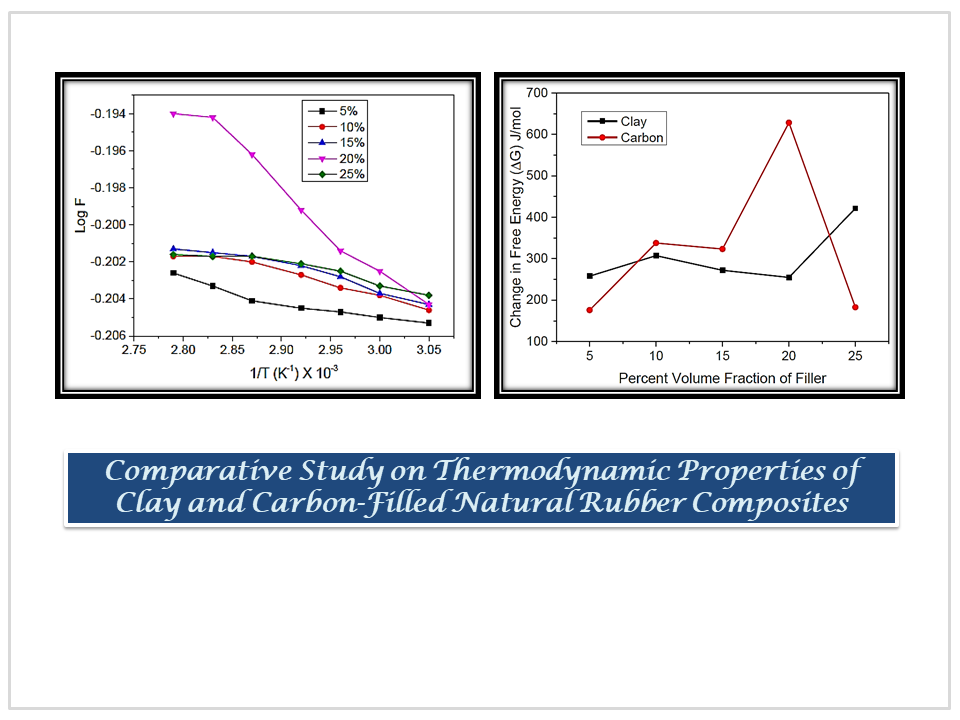Chemical Science & Engineering Research
Title
Comparative Study on Thermodynamic Properties of Clay and Carbon-Filled Natural Rubber Composites
Authors
Jacob Olalekan Arawande,*a,b Gabriel O. Orodepob and Modupe Olatidea
aDepartment of Science Laboratory Technology, University of Medical Sciences, P. M. B. 536, Ondo City, Ondo State, Nigeria.
bDepartment of Chemistry, University of Medical Sciences, P. M. B. 536, Ondo City, Ondo State, Nigeria.
*Corresponding author E-mail address: jarawande@unimed.edu.ng (Jacob Olalekan Arawande)
Article History
Publication details: Received: 20th December 2022; Revised: 10th April 2023; Accepted: 10th April 2023; Published: 24th April 2023
Cite this article
Arawande J.O.; Orodepo G.O.; Olatide M. Comparative Study on Thermodynamic Properties of Clay and Carbon-Filled Natural Rubber Composites. Chem. Sci. Eng. Res., 2023, 5(12), 24-29.

Abstract
The mechanical properties (such as tensile strength and Young’s modulus) of rubber composites were evaluated from the thermodynamic parameters (ΔG, ΔH, and ΔS) obtained for natural rubber composites filled with clay and carbon black at varying volume fractions of fillers (5%-25%). The tension developed in each rubber composite due to changes in temperature was used in determining thermodynamic parameters via the Arrhenius equation and plots. The result showed that between 8.50-23.50% volume fractions of filler, clay-filled rubber composites exhibited higher spontaneity of elasticity and higher tensile strength than the corresponding carbon black-filled composites. At lower filler concentration (5-7%), clay-filled composites exhibited higher modulus than carbon black-filled rubber composites and between 7.50% and 23.50% filler concentration, carbon black reinforced composites showed superior modulus values. An almost two-fold increase in modulus was observed for carbon black-filled composites when the filler concentration was increased from 15% to 20% and beyond 20% the modulus decreased drastically. For clay-filled rubber composites, the entropy change increased with increasing filler concentration up to 15% and decreased beyond 15%, while for carbon black reinforced composites, it decreased to a minimum as the filler loading increased from 5% to 10% and then increased gradually as filler concentration increased between 10-25% volume fractions. Low value of entropy change obtained at a 5% volume fraction of clay conferred excellent mechanical properties on the composite almost comparable with what was observed at a 10% volume fraction of carbon black.
Keywords
Carbon black; clay; natural rubber; filler; composites; Arrhenius equation; thermodynamic